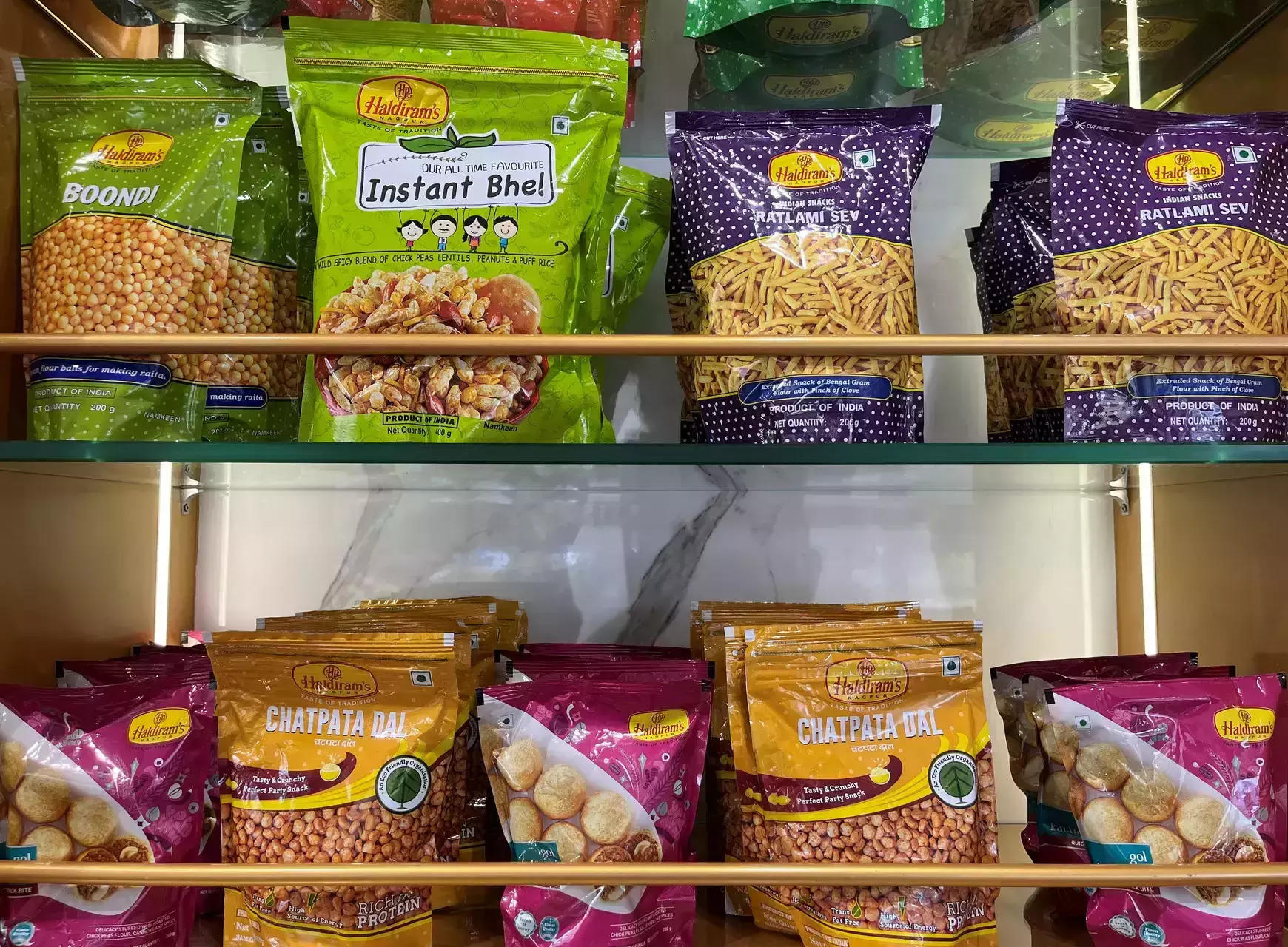[ad_1]

In the bustling streets of India, where aromatic tea is enjoyed alongside packets of Haldiram’s Bhujia, a different kind of excitement has taken hold in the financial market. Recent reports suggest that Tata Consumer, the owner of brands like Tetley and Starbucks in India, is contemplating a significant investment, acquiring a 51% stake in Haldiram’s, with an estimated valuation of a staggering $10 billion. The mere rumour of this deal sent Tata Consumer’s stock soaring by 4% following a Reuters report.
The Past: A Blue Ocean Strategy that created the Haldiram’s Empire
While Haldiram’s origin dates back to 1937, the pivotal year was 1992, when they ventured into namkeen manufacturing shortly after India’s economic liberalisation. With a shrewd focus on branded namkeen tailored for the Indian market, Haldiram’s embarked on a remarkable journey of growth that showed no signs of slowing down.
Today, Haldiram’s proudly holds the title of India’s largest snacks maker, boasting a turnover of $1 billion according to the latest financial reports. This resurgence has allowed Haldiram’s to reclaim its throne as the country’s leading snack company, surpassing giants like PepsiCo in sales figures.
The Present – Haldiram’s: The Golden Child of India FMCG
To fathom the colossal $10 billion valuation, a closer examination of Haldiram’s business is essential:
Packaged Food Segment: Haldiram’s wields considerable influence in the salted snack market, commanding an enviable 38.5% market share within the organised ethnic snacks category. While salted snacks spearhead Haldiram’s revenue, contributing over 75% of their earnings, the overall packaged food portfolio remains a robust contributor, accounting for 85% of the company’s total revenue.
QSR Segment: Complementing its packaged food empire, Haldiram’s also possesses a thriving Indian QSR (Quick Service Restaurant) business, contributing 15% to its overall revenue.
Haldiram’s Investment Potential – A Venture Capital-like Opportunity with Private Equity Risks
According to the APEXX Formula, investors, including Tata, may anticipate seven-year returns as follows:
By maintaining the P/E (Price-to-Earnings) ratio at approximately 110 (the current ratio at the $10 billion valuation), earnings growth rates of 15%, 20%, and 25% would yield MOICs (Multiple on Invested Capital) of 2.63x, 3.55x, and 4.72x, respectively.
If earnings growth remains constant at 20%, improvements in the P/E multiple to 120, 130, and 140 will result in MOICs of 3.87x, 4.19x, and 4.51x over a seven-year period.
With the burgeoning Indian middle class, a 20% earnings growth rate seems easily attainable. Even with a 20% contraction in the multiple, Haldiram’s promises substantial returns, estimated at a staggering $29.02 billion on the valuation.
The prospect of a $10 billion valuation today, coupled with sophisticated financial strategies and a strategic overhaul of the QSR business, presents an enticing opportunity for investors, potentially quintupling the current MOIC.
The Future – Haldiram’s: The Multi-Billion Dollar Prodigy
Haldiram’s strategic significance extends beyond its current standing; it’s a bet on the Indian consumer market, spanning packaged foods and QSR. The trajectory of related players like RJ Corp, Devyani International, and Bikaji Foods, coupled with the bustling stores of major QSR chains in India’s cities, underscores the surging appetite for QSR businesses, set to grow exponentially over the next two decades.
Drawing parallels with Yum! Brands’ growth in China, Haldiram’s, if correctly structured, may follow a similar trajectory. Yum! Brands delivered an impressive 945% cumulative total return to shareholders vs. a 99% total return for the S&P 500, with its early and aggressive bet on the Chinese market being the major contributor. In 1997, Yum had fewer than 200 restaurants, growing to 5700 by the end of 2012, and currently, the number stands at approximately 10,000. Thus, the market currently undervalues India’s burgeoning middle class, presenting immense opportunities for brands like Haldiram’s.
There are a number of major value-creation areas for the business:
QSR Segment: Haldiram’s currently operates most of its stores. Embracing an aggressive franchising policy and adopting an asset-light model with streamlined systems could propel Haldiram’s towards exponential earnings growth. Tata’s expertise, as seen with Tanishq, positions them favourably to undertake this transformation.
PropCo – OpCo Split: As per the latest filings, Haldiram’s PP&E is valued at $330 million. Using financial engineering to separate the ownership of real estate assets (PropCo) from the operational business entity (OpCo) that leases and operates the properties will generate massive value for the business. Assuming a cap rate of 10% for the real estate and a 20% hurdle rate of return, the capital freed up can boost Haldiram’s earnings by 35%.
While the above are a few levers, with financial engineering expertise, Haldiram’s offers multiple out-of-the-money call options that can unlock substantial value for investors – over and above the business returns.
In Conclusion
Haldiram’s, even at a $10 billion valuation, offers a promising avenue for high returns. Yet, it’s merely a glimpse of the vast potential within India’s branded retail market, with its expanding middle class hungry for more than just pizzas and burgers.
The key to reaping substantial rewards in this segment lies in an India-centric approach, blending intricate financial engineering with strategic operational expertise. As the Indian middle class continues to flourish, Haldiram’s type businesses are poised to capitalise on this economic boom, setting the stage for financial success on an unprecedented scale.
Note: Haldiram’s above refers to the combined entity of Haldiram’s Snacks Pvt Limited and Haldiram Foods International Private Limited.
Poornima Vardhan and Taponeel Mukherjee are the founders and principals at AltG.
(DISCLAIMER: The views expressed are solely of the author and ETRetail.com does not necessarily subscribe to it. ETRetail.com shall not be responsible for any damage caused to any person/organization directly or indirectly.)
[ad_2]
Source link





